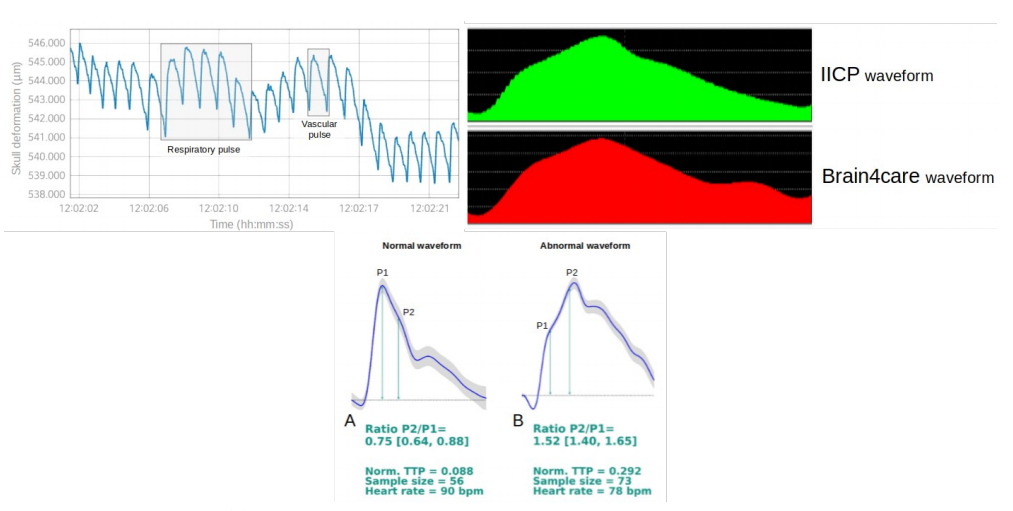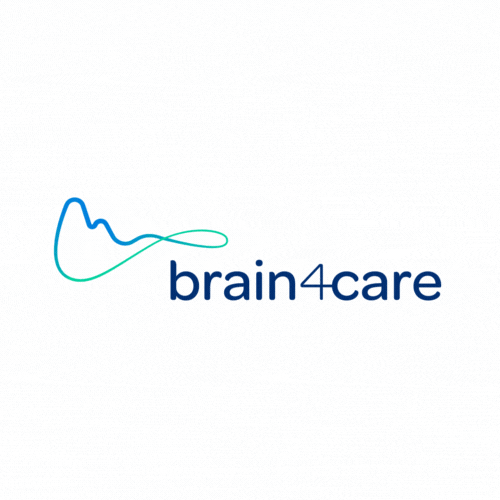
The critical review of noninvasive methods for monitoring intracranial pressure has been published by the journal Arquivos de Neuro-Psiquiatria and was also presented in a poster session at NCS 2021
A critical review of noninvasive intracranial pressure (ICP) monitoring methods has included the brain4care sensor in the scientific literature on the subject. The device detects small variations in skull volume caused by changes in ICP’.
The result of this work was published in the article Noninvasive intracranial pressure monitoring methods: a critical review, signed by researchers Fabiano Moulin de Moraes and Gisele Sampaio Silva. The study was published by the journal Arquivos de Neuro-Psiquiatria and has also been presented in a poster session at the 19th Annual Meeting of the Neurocritical Care Society (NCS 2021), which took place from October 26th to October 29th 2021.
The use of intracranial pressure monitoring has been adopted for decades in the management of many neurological conditions. However, invasive intraventricular monitoring, which is currently the gold standard, is related to several complications, including hemorrhage, obstruction, malpositioning, infection and loss of accuracy for asymmetric hemispheric lesions, in addition to requiring a neurosurgical procedure.
“For more than 20 years we have had evidence that our gold standard has some difficulties, for example, we depend on the surgeon, the operating room and the patient’s clinical stability to tolerate anesthesia and surgery”, explains Moraes.
In addition, it is a procedure that harms the brain, which can bleed, infect and may not be perfect even in the monitoring itself, that is, in its own objective”, he adds.
Disagreements in literature on the clinical benefits of ICP monitoring
Although the management of ICP presents clear benefits, there is no consensus in the literature that there is a real clinical benefit of ICP monitoring, compared to management based only on the patient’s neurological examination, imaging findings, and evaluation by the patient’s doctor.
While some studies have shown that monitoring ICP is associated with better survival rates, others have suggested that this is not only fruitless, but may actually lead to poorer clinical outcomes, including increased mortality, longer hospital stays, increased complication rates and increased costs of hospitalization compared to a noninvasive monitoring ICP approach in traumatic brain injury (TBI) patients.
According to the authors of the paper, the only randomized trial that evaluated the effect of invasive monitoring of ICP on clinical outcomes among patients with severe TBI found that there was no significant difference in six-month mortality.
“These results indicate that there is still room for improvement in the clinical management of ICP monitoring findings, which could help in better clinical decisions and better outcomes for critically ill patients,” says the researcher.

Critical review and different modalities revisited
In the review of noninvasive ICP monitoring methods, the different modalities and approaches were grouped according to the mechanism used to detect the ICP elevation and the neurological consequences of this increase, such as reduced cerebral blood flow and metabolic changes.
The main approaches revisited were: physical examination, neuroimaging (magnetic resonance, computed tomography and ultrasound of the optic nerve sheath), indirect ICP estimation techniques (fundoscopy, displacement of the tympanic membrane and cranial elasticity), assessment of cerebral blood flow (transcranial Doppler and ophthalmic artery Doppler), measurements of metabolic changes (near infrared spectroscopy) and neurophysiological studies (electroencephalogram, visual evoked potential and otoacoustic emissions).

Although this topic has already been addressed by other authors, Moraes and Silva have presented an updated literature review with a discussion of new methods that had not yet been evaluated in previous reviews.
“We carried out a systematic literature review to understand the available options, the benefits, facilities, difficulties, skills and incompetences. In addition, we have included brain4care in this review, which was the first to consider it directly or more explicitly as a method, as this ability to distend the skullcap was very little discussed until then. But I believe that starting with brain4care this will change”, says Moraes.
Conclusions of researchers on ICP monitoring an the effectiveness of the noninvasive brain4care method
Despite the limitations of the gold standard method for monitoring ICP, the researchers concluded that no noninvasive ICP monitoring method meets the technical requirements – accuracy, reliability and therapeutic options – for replacing invasive techniques, not even in cases that only require ICP monitoring without cerebrospinal fluid drainage.
However, the article highlights the effectiveness of the method that uses the noninvasive brain4care sensor: “At the current stage of development, the device does not display pressure valuescalibrated in mmHg, but can provide continuous real-time information on the waveform of the ICP and, consequently, of intracranial compliance. The information shows great similarity with the curves obtained using invasive methods”.
For Moraes, recognition of the method and, more specifically, the understanding that assessing intracranial compliance may be more important than monitoring ICP, is a matter of time. And it will be a leap that will benefit, above all, patients.
“brain4care has a fantastic premise, an enormous capacity to show the data, the ICP waveform, but we need further scientific research. Science is not just about intention or good ideas, but about experimentation, and we are right at this moment”, he points out.
In addition to the article, the researcher has been using the noninvasive brain4care sensor in his clinical practice. “My experience with brain4care was fantastic, so I have no doubts about the importance of the method. But science is not about personal opinion, but instead analyzing data and recommending that other groups replicate the research and reach their own conclusions”, he points out.
In other words, there is still need for further evidence before such noninvasive monitoring or estimating techniques become a more robust alternative to invasive techniques.





